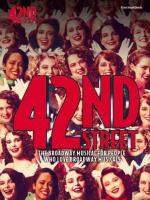|
This section contains 933 words (approx. 4 pages at 300 words per page) |

|
The first of a series of Depression-era musicals released by the Warner Brothers Pictures, 42nd Street is notable for its role in reviving and redefining a cinematic genre which had begun to fade by 1933. Following the industrywide adaptation of sound films in 1929, Hollywood promptly released a plethora of musicals to excited audiences. Unfortunately, the majority of these products were hastily conceived and often hindered by the still unresolved technical mysteries of "talking" pictures. Such artistic shortcomings conspired with a saturation of the marketplace, and the public's enthusiasm for such fare rapidly faded.
The successful release of 42nd Street in March of 1933 reversed this trend, and convinced the major studios to reexamine the commercial possibilities for screen musicals. By the end of the year, Warner had released two follow-up films, Goldiggers of 1933 and Footlight Parade. Other studios embraced this trend, most notably RKO-Radio that began production of...
|
This section contains 933 words (approx. 4 pages at 300 words per page) |

|


